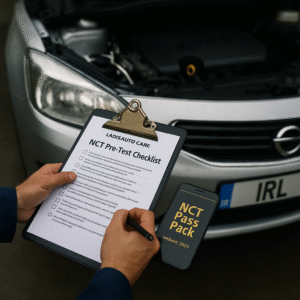As a responsible car owner, it’s crucial to understand the meaning of the warning lights on your car’s dashboard. These lights serve as an essential communication tool, alerting you to potential issues with your vehicle. By knowing what each warning light signifies and taking appropriate action, you can ensure the safety and longevity of your car. In this comprehensive guide, we will explain the meaning of various dashboard warning lights and provide guidance on what actions to take when they appear.
1. Check Engine Light
The most common and recognizable warning light is the check engine light. When this light illuminates, it indicates a problem with the engine or its related components. While the issue can range from minor to severe, it’s important not to ignore it. As a first step, check if your gas cap is loose, as this can trigger the light. If the light persists, it’s advisable to have your car diagnosed by a qualified mechanic to identify and fix the underlying problem.
2. Battery Warning Light
The battery warning light typically resembles a battery-shaped icon and indicates an issue with the charging system. It could be a faulty alternator, a loose or damaged battery connection, or a failing battery. If this light comes on while driving, it’s advisable to turn off any unnecessary electrical accessories and head to a service center as soon as possible to avoid a potential breakdown.
3. Oil Pressure Warning Light
The oil pressure warning light, often depicted as an oil can or oil drop, indicates low oil pressure. Low oil pressure can lead to engine damage if not addressed promptly. When this light comes on, pull over to a safe location and check your oil level. If it’s low, add oil as needed. If the oil level is normal, it’s essential to have your vehicle inspected by a professional to determine the cause of the low oil pressure.
4. Tyre Pressure Monitoring System (TPMS) Light
The TPMS light, usually represented by an exclamation point inside a horseshoe-shaped icon, alerts you to low tyre pressure. Properly inflated tyres are crucial for safe driving and optimal fuel efficiency. When this light illuminates, check your tyre pressure using a tyre pressure gauge and inflate the tyres to the recommended level. If the light persists, it may indicate a puncture or a malfunctioning TPMS sensor, requiring professional attention.
5. ABS Warning Light
The ABS (Anti-lock Braking System) warning light indicates a problem with the braking system. When this light comes on, it’s a sign that the ABS may not function correctly in an emergency braking situation. While your regular braking system should still work, it’s important to have your vehicle inspected by a professional as soon as possible to diagnose and rectify the issue.
6. Airbag Warning Light
The airbag warning light, often depicted as a seated person with a deployed airbag, indicates a problem with the airbag system. When this light comes on, it means that your airbags may not deploy in the event of an accident. It’s crucial to have your car inspected by a professional to identify and fix any issues with the airbag system.
7. Coolant Temperature Warning Light
The coolant temperature warning light, usually depicted as a thermometer floating in liquid, alerts you to an overheating engine. When this light comes on, it’s essential to pull over to a safe location, turn off the engine, and allow it to cool down. Check the coolant level and top it up if necessary. If the light persists after taking these steps, it’s advisable to have your vehicle inspected by a professional to diagnose and repair any cooling system issues.
8. Fuel Warning Light
The fuel warning light, often represented by a fuel pump icon, indicates that your fuel level is low. When this light comes on, it’s time to refuel your vehicle. Ignoring this warning can lead to running out of fuel, potentially leaving you stranded on the road.
Conclusion
Understanding the meaning behind your car’s warning lights is crucial for maintaining its performance and safety. By promptly addressing any issues indicated by these lights, you can prevent further damage and costly repairs. Remember, if a warning light appears on your dashboard and you’re unsure of its meaning or how to proceed, consult your vehicle’s owner’s manual or seek assistance from a qualified mechanic. Your car’s warning lights are there to help you, so pay attention and take action when needed.





